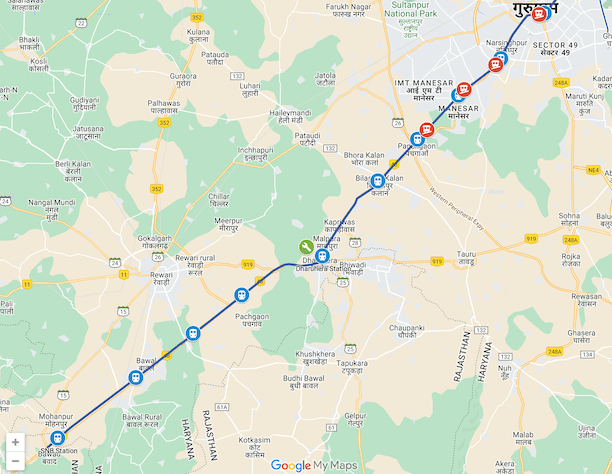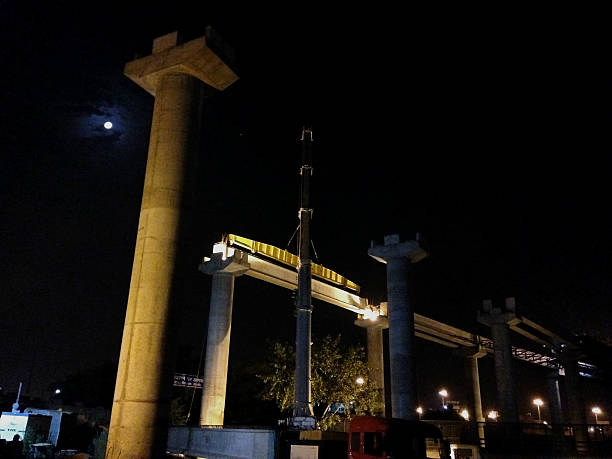
Introduction
Delhi-Alwar RRTS corridor update by National Capital Region Transport Corporation (NCRTC) is spearheading a number of projects aimed at improving public transportation in the National Capital Region (NCR). One of their flagship projects is the Delhi-Alwar Regional Rapid Transit System (RRTS), which will connect Delhi to Alwar via several cities in the NCR. One of the stops along this route will be Dharuhera, a fast-growing industrial town in Haryana. Let’s take a closer look at this project and its potential impact on the region.
The Delhi Alwar RRTS corridor

The Delhi-Alwar RRTS corridor is a high-speed rail corridor that will run from Sarai Kale Khan in Delhi to Alwar in Rajasthan. The total length of the corridor will be 164 km, and it will have 22 stations along the way. The project is being implemented by the NCRTC, a joint venture between the Ministry of Urban Development and the state governments of Delhi, Haryana, Rajasthan, and Uttar Pradesh. The estimated cost of the project is Rs 53,000 crore.
The RRTS corridor will have a top speed of 180 km/h and will use a dedicated corridor, separate from existing railway tracks and roads. This will ensure that the trains can run at high speeds without getting caught in traffic congestion. The trains will be equipped with modern amenities such as air conditioning, Wi-Fi, and CCTV cameras for passenger safety.
The Benefits of the Delhi Alwar RRTS Corridor
The Delhi Alwar RRTS update is expected to bring a number of benefits to the region. First and foremost, it will provide a fast, reliable, and comfortable mode of transportation for commuters. The journey from Delhi to Dharuhera, which currently takes around 2 hours by car, will be reduced to just 40 minutes by RRTS. This will make it easier for people to travel between Delhi and the towns and cities in the NCR.
In addition to improving connectivity, the RRTS corridor is expected to have a positive impact on the environment. By encouraging people to use public transportation, the project will help reduce air pollution and traffic congestion in the region. The use of modern, energy-efficient trains will also help reduce the carbon footprint of transportation in the region.
The RRTS corridor is also expected to spur economic development in the region. The improved connectivity will make it easier for people to travel to work, and will also make it easier for businesses to transport goods and raw materials. This is expected to lead to the development of new industrial and commercial hubs along the RRTS corridor.
The Impact on Dharuhera
Dharuhera is one of the towns that will benefit from the Delhi Alwar RRTS. The town is located on the Delhi-Jaipur National Highway, and is home to a number of industries, including automobile manufacturing, pharmaceuticals, and textiles. Currently thousands of people commute daily to and fro from Dharuhera to Delhi via different mode of transport like car, bus, cabs etc. and due to higher travelling time it has badly impacted people life in health and wealth because of pollution, accidents, traffic jams, unpredictable travel time and high traveling cost for daily passengers. The improved connectivity provided by the RRTS corridor is expected to attract more businesses to the town, and also make it easier for people to commute to work.
In addition to economic benefits, the RRTS is also expected to improve the quality of life for residents of Dharuhera. The reduced travel time will make it easier for people to access healthcare, education, and other essential services in Delhi and other cities in the NCR. The improved connectivity will also make it easier for people to visit friends and family who live in other parts of the region.
The impact of the RRTS on Dharuhera can be seen in the context of the town’s history and current economic and social status. Dharuhera was traditionally an agricultural town, but over the years it has transformed into a major industrial hub, with a number of large and small industries setting up operations in the town. The town has also seen a steady growth in population over the years, with many people from neighboring towns and villages moving to Dharuhera in search of employment opportunities.
Despite its industrial growth, Dharuhera still faces a number of challenges, including poor infrastructure, lack of basic amenities, and inadequate public transportation. The RRTS is expected to address some of these challenges by providing a fast, reliable, and comfortable mode of transportation for residents.
The improved connectivity provided by the RRTS is expected to attract more businesses to Dharuhera, and also make it easier for existing businesses to transport goods and raw materials. This is expected to create more job opportunities for the town’s residents and also boost the local economy. In addition, the RRTS is expected to improve the town’s overall infrastructure, as the NCRTC is also investing in the development of stations and associated infrastructure along the corridor.
The RRTS is also expected to have a positive impact on the environment in Dharuhera. By encouraging people to use public transportation, the project will help reduce air pollution and traffic congestion in the town. This is particularly important given the high levels of air pollution in the NCR, which is a major public health concern.
Overall, the Delhi-Alwar RRTS is expected to bring significant benefits to Dharuhera and the NCR region as a whole. By improving connectivity, reducing travel time, and spurring economic development, the project has the potential to transform the region and improve the quality of life for its residents.
Conclusion
The Delhi-Alwar RRTS is a major infrastructure project aimed at improving public transportation in the NCR region. One of the stops along the corridor will be Dharuhera, a fast-growing industrial town in Haryana. The RRTS is expected to bring significant benefits to the town, including improved connectivity, reduced travel time, and spurring economic development. It is also expected to have a positive impact on the environment by reducing air pollution and traffic congestion. Overall, the project has the potential to transform the region and improve the quality of life for its residents.


